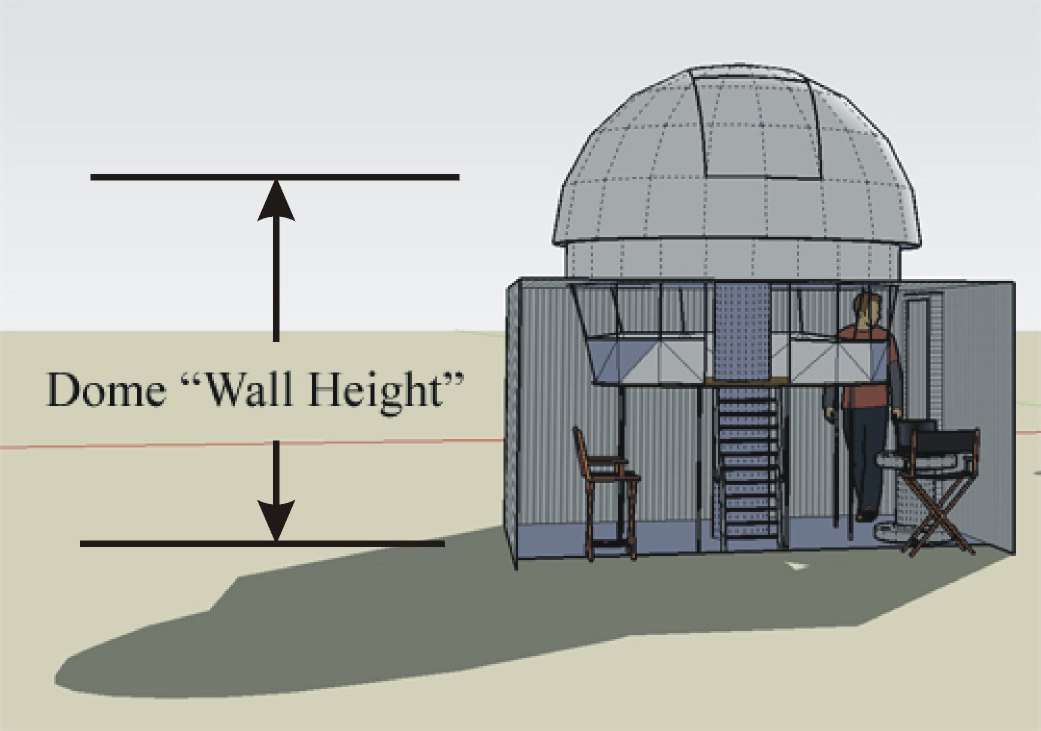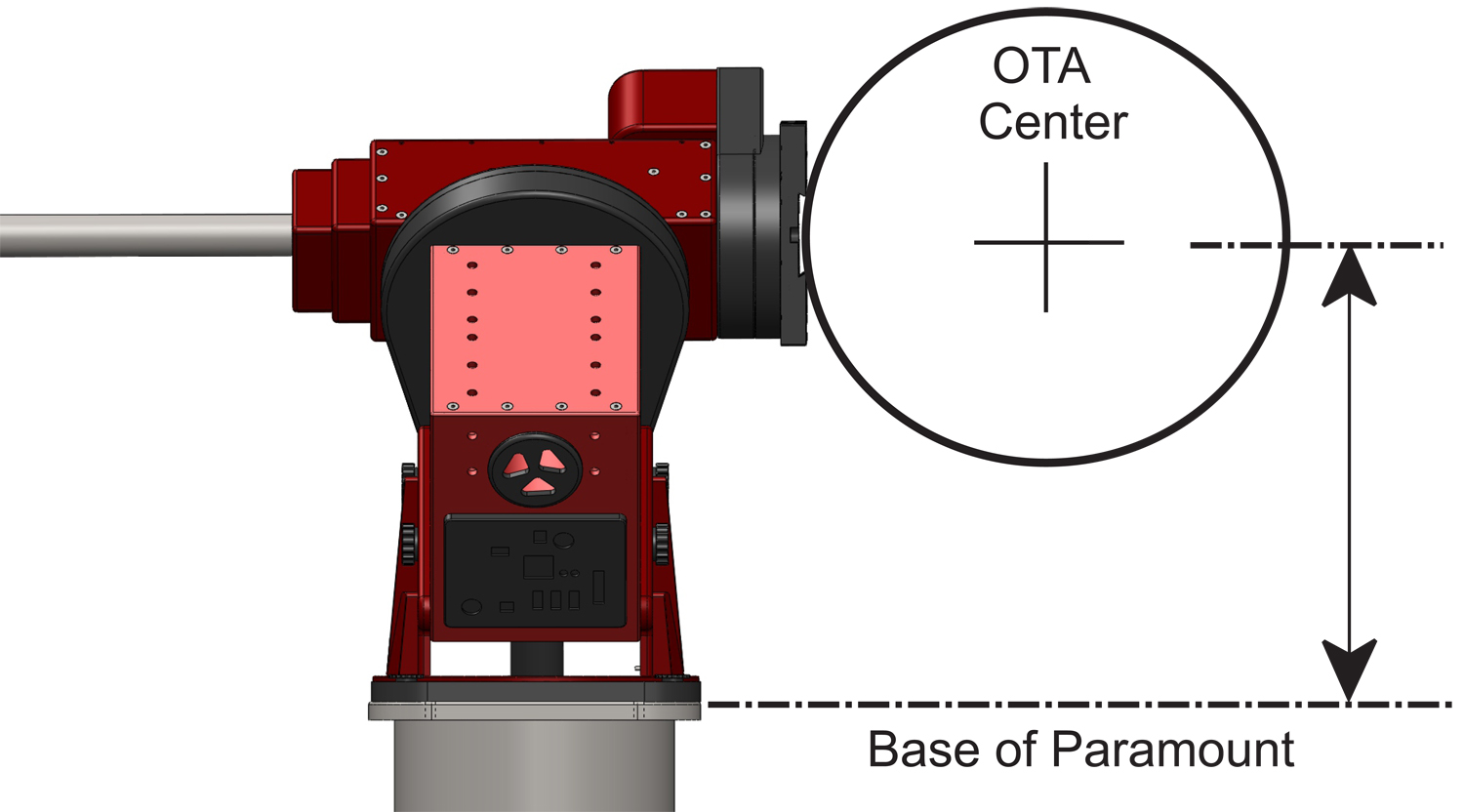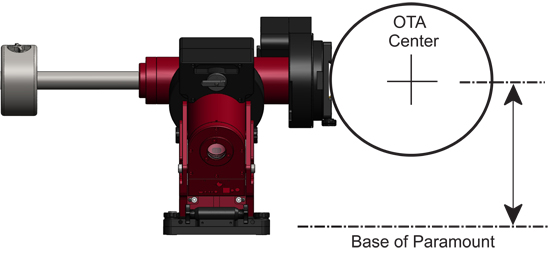|
|
Paramount ME Web Site |
|
|
Paramount ME Web Site |
Software Bisque is often asked "What height pier do I need for my observatory?"
Assuming you will be using the Paramount ME, Paramount ME II or Paramount MX and a CCD camera as the detector, the questions you must answer include:
What is height of the walls in the observatory? (Important! More specifically, the "height of the walls" is the distance measured from the bottom of the pier, which is typically the observatory floor to the lowest point in the opening of the observatory. The "lowest point in the opening of the observatory" for a dome is the base of the dome's slit and not necessarily the height of the observatory's walls. In a roll off roof, this point is typically the height of the observatory walls.)
What is the latitude of your observatory?
What is the distance from the bottom of the Paramount ME to the center of the optical tube assembly when the optical tube assembly is pointing at the horizon, looking south?
Is this height of the pier above the minimum pier height?
The following describes each parameter in the pier height equation. Be sure to use the same units (cm or inches) when recording these measurements!
Use a carpenter's tape measure to measure the distance from the observatory floor to the top of the observatory walls. If the pier will be mounted on a platform, then subtract the height of the platform from this measurement. This is the height of the "observatory walls".
If the mount is housed within a dome, make sure that the point of intersection of the right ascension and declination axes of the Paramount ME, when mounted on the top of the pier, is at the same height as the bottom of the dome opening (or aperture or slit). Please refer to the diagram below.

Note that the height of the observatory walls may not be the actual "dome wall height".
Use a Global Position Satellite (GPS) device, quadrangle map or web-based mapping software to determine the approximate latitude of your observatory.
Use the table below to determine the “height” of the center of your optical tube assembly when the optical tube assembly (OTA) is pointed at the horizon, looking south at your latitude. (This orientation defines the minimum position so that objects near the horizon are visible through the telescope.)
|
Approximate OTA Center Height (looking south, at the horizon) vs. Latitude
|
|||
|
Latitude
|
Paramount ME |
Paramount ME II |
Paramount MX |
|
10º |
32 cm (13 in.) |
28 cm (12 in.) |
24 cm (9 in.) |
|
20º |
37 cm (15 in.) |
33 cm (13 in.) |
28 cm (11 in.) |
|
30º |
41 cm (16 in.) |
38 cm (15 in.) |
32 cm (13 in.) |
|
40º |
44 cm (17 in.) |
42 cm (16 in.) |
35 cm (14 in.) |
|
50º |
46 cm (18 in.) |
45 cm (18 in.) |
38 cm (15 in.) |
|
60º |
46 cm (18 in.) |
47 cm (18 in.) |
39 cm (16 in.) |
|
70º |
46 cm (18 in.) |
48 cm (19 in.) |
40 cm (16 in.) |
Excel Spreadsheet for computing pier height


The "OTA center height at the meridian" distance is measured from the base of the Paramount ME (left) and Paramount MX (right) to the center of the OTA. This measurement is especially important if the mount is inside a dome, or there are walls around the observatory building that might obstruct the telescope’s view. An unobstructed view at the horizon requires the pier top be high enough so that OTA does not point “into the wall” when pointing north or south.
The height of your pier should be equal to the height of the observatory wall minus the OTA center height, or:
Pier Height = Observatory Wall Height - OTA Center Height
Having a pier of at least this height will ensure that the telescope can be pointing at the horizon, and still be able to "see" objects very near the horizon without the observatory walls completely obstructing the view.
What height pier is required for an observatory that is located at 25 degrees latitude and has walls that are 100 cm (39.4 in.) tall, so that objects near the horizon are still visible through the telescope? (Specifically, when the mount is oriented looking due South, and the center of the OTA is at the same height as the observatory wall.)
OTA center height from base of Paramount ME = 8.2 cm + sin( 49 ) x 38.3 = 39.2 cm (or 15.4 in.)
Height of the wall = 100 cm (39.4 in.)
Desired Pier Height = 100 cm - 39.2 cm = 60.8 cm
So, a 60 cm (24 in.) tall pier should be sufficient for this observatory.